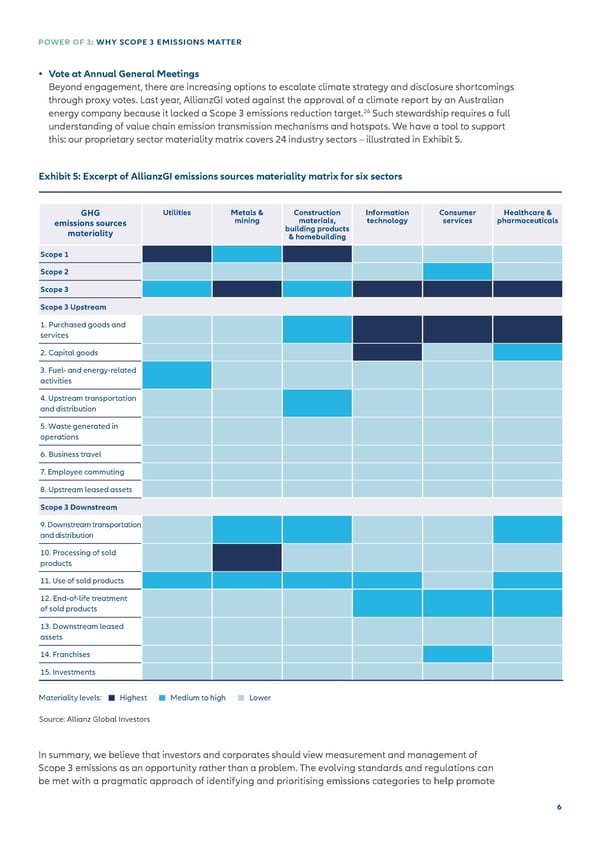POWER OF 3: WHY SCOPE 3 EMISSIONS MATTER • Vote at Annual General Meetings Beyond engagement, there are increasing options to escalate climate strategy and disclosure shortcomings through proxy votes. Last year, AllianzGI voted against the approval of a climate report by an Australian 26 energy company because it lacked a Scope 3 emissions reduction target. Such stewardship requires a full understanding of value chain emission transmission mechanisms and hotspots. We have a tool to support this: our proprietary sector materiality matrix covers 24 industry sectors – illustrated in Exhibit 5. Exhibit 5: Excerpt of AllianzGI emissions sources materiality matrix for six sectors GHG Utilities Metals & Construction Information Consumer Healthcare & emissions sources mining materials, technology services pharmaceuticals materiality building products & homebuilding Scope 1 Scope 2 Scope 3 Scope 3 Upstream 1. Purchased goods and services 2. Capital goods 3. Fuel- and energy-related activities 4. Upstream transportation and distribution 5. Waste generated in operations 6. Business travel 7. Employee commuting 8. Upstream leased assets Scope 3 Downstream 9. Downstream transportation and distribution 10. Processing of sold products 11. Use of sold products 12. End-of-life treatment of sold products 13. Downstream leased assets 14. Franchises 15. Investments Materiality levels: Highest Medium to high Lower Source: Allianz Global Investors In summary, we believe that investors and corporates should view measurement and management of Scope 3 emissions as an opportunity rather than a problem. The evolving standards and regulations can be met with a pragmatic approach of identifying and prioritising emissions categories to help promote 6
 Scope 3 Emissions Page 5 Page 7
Scope 3 Emissions Page 5 Page 7